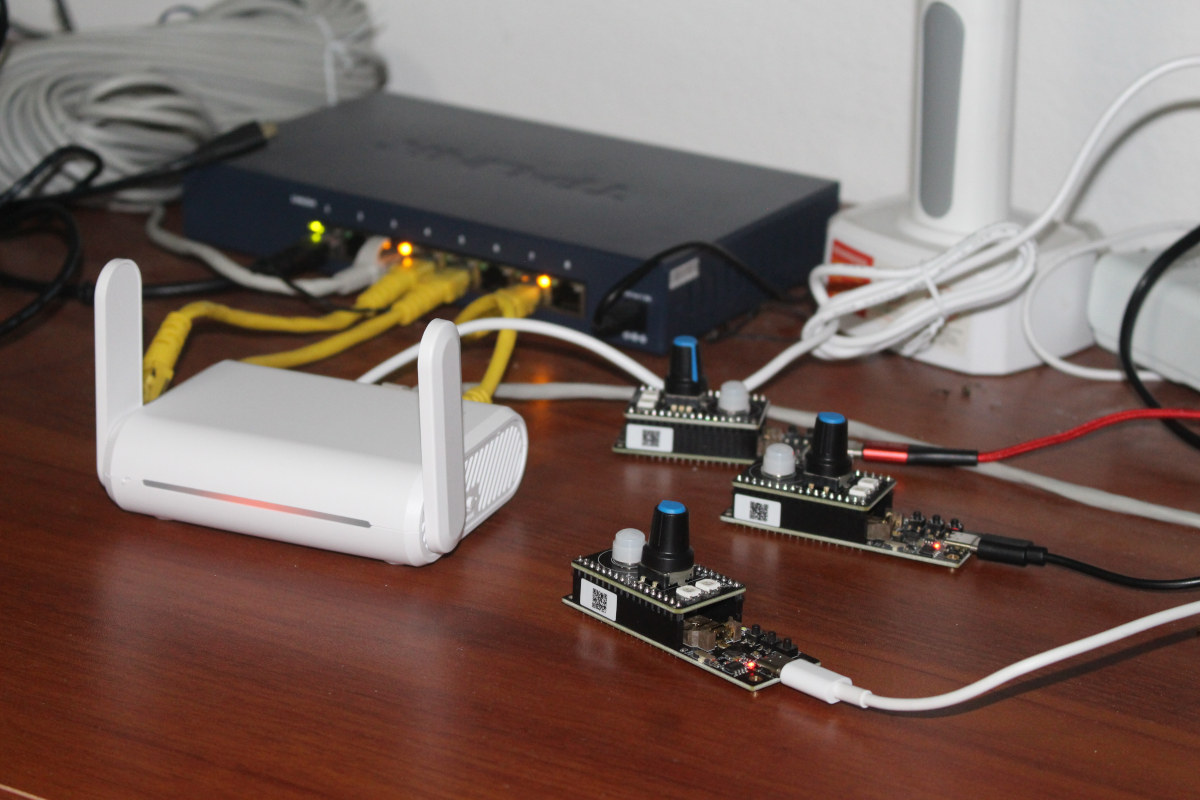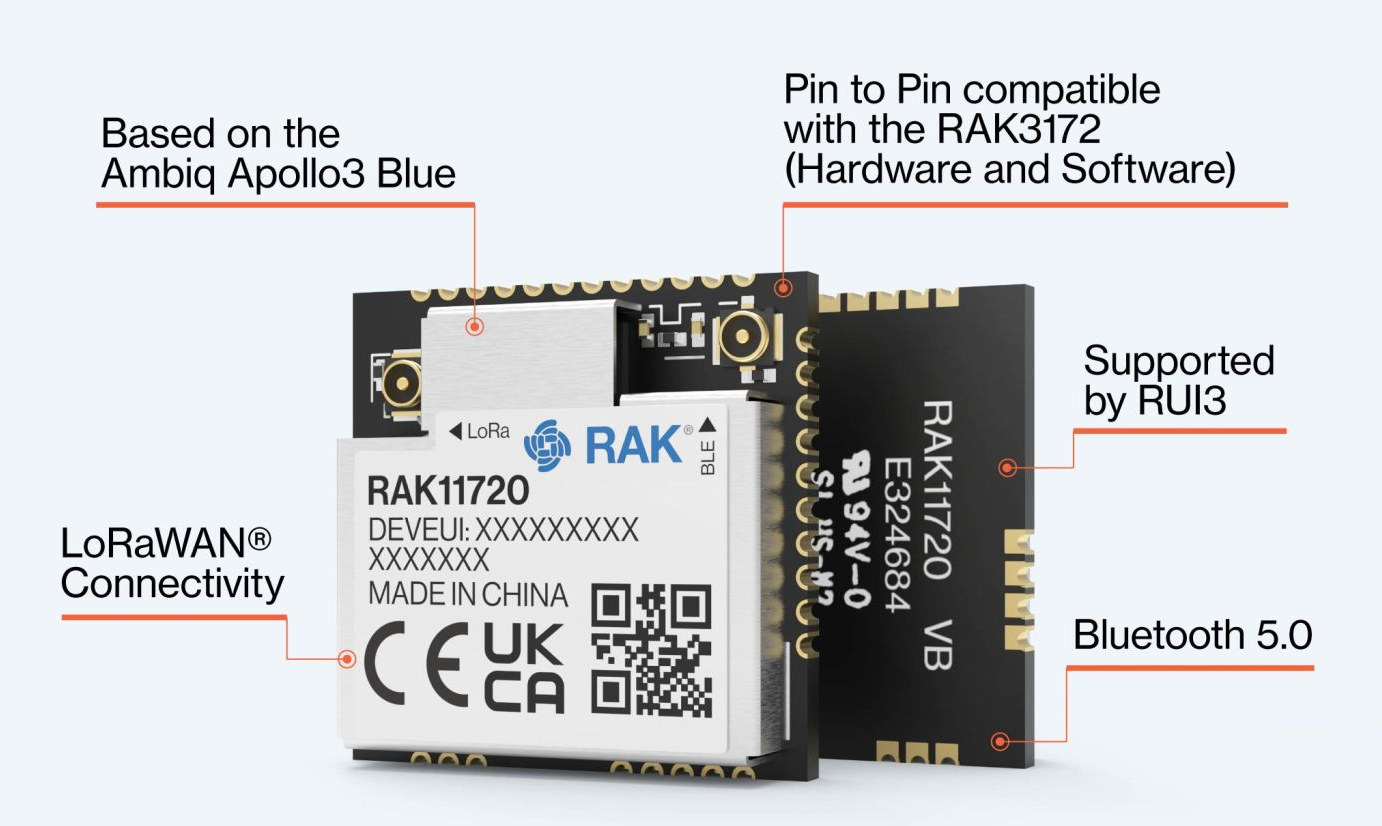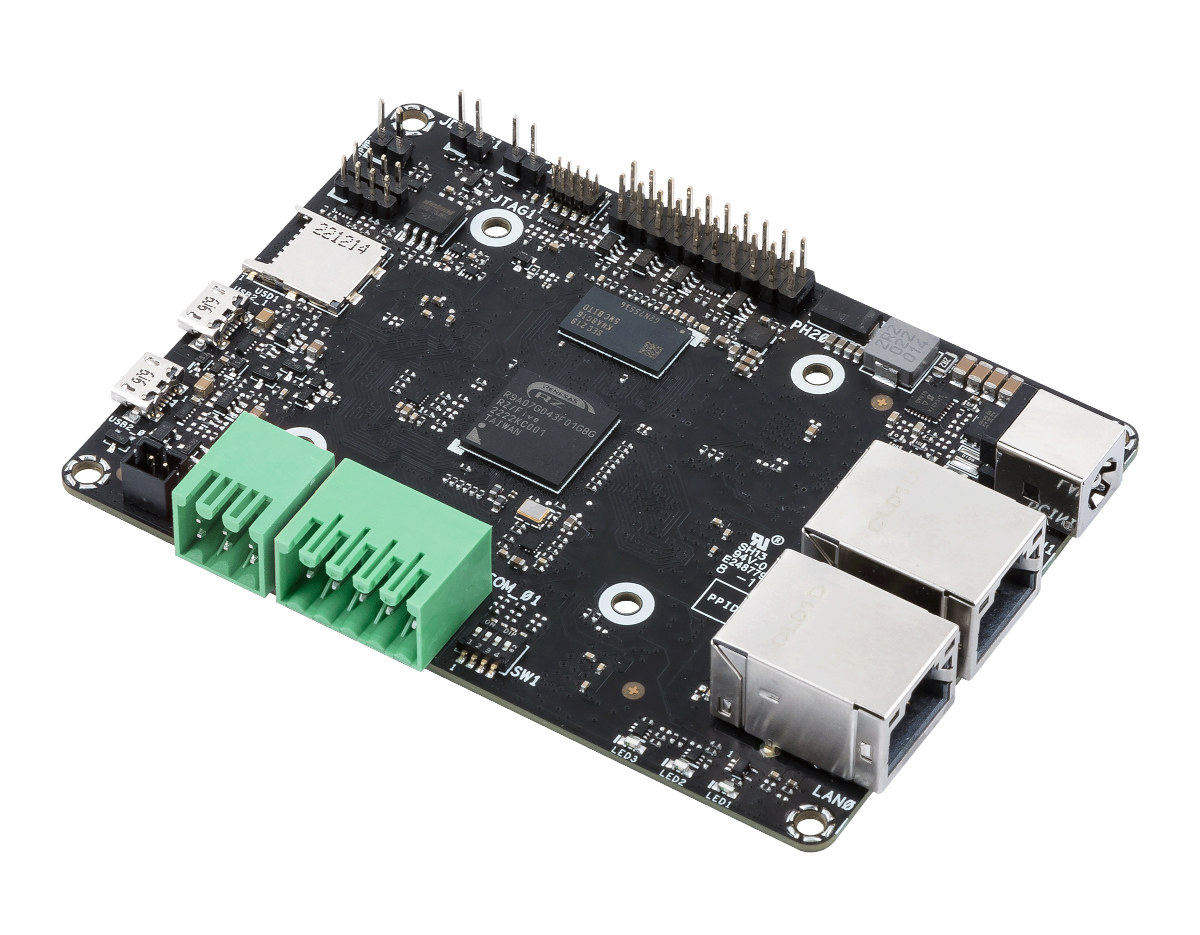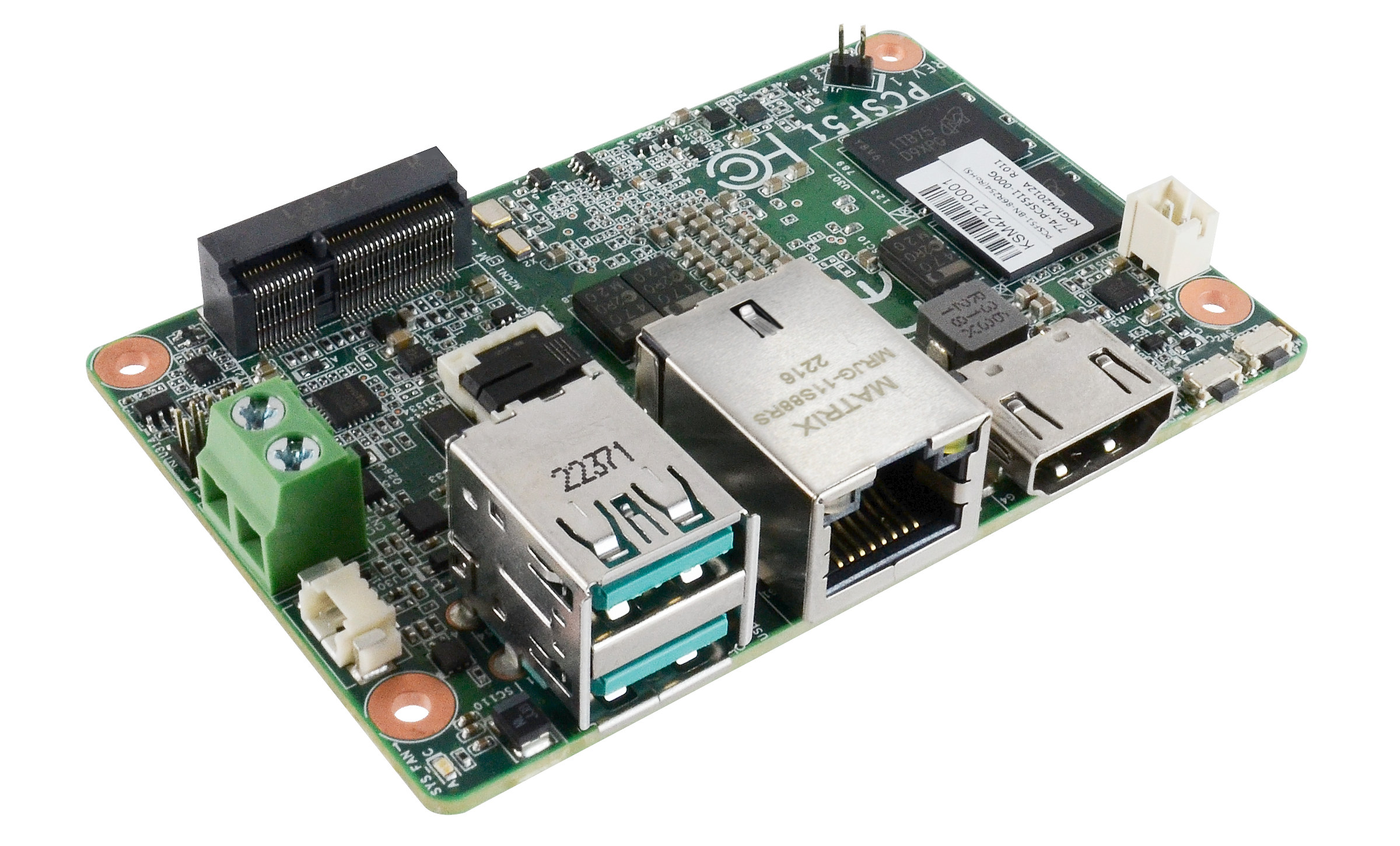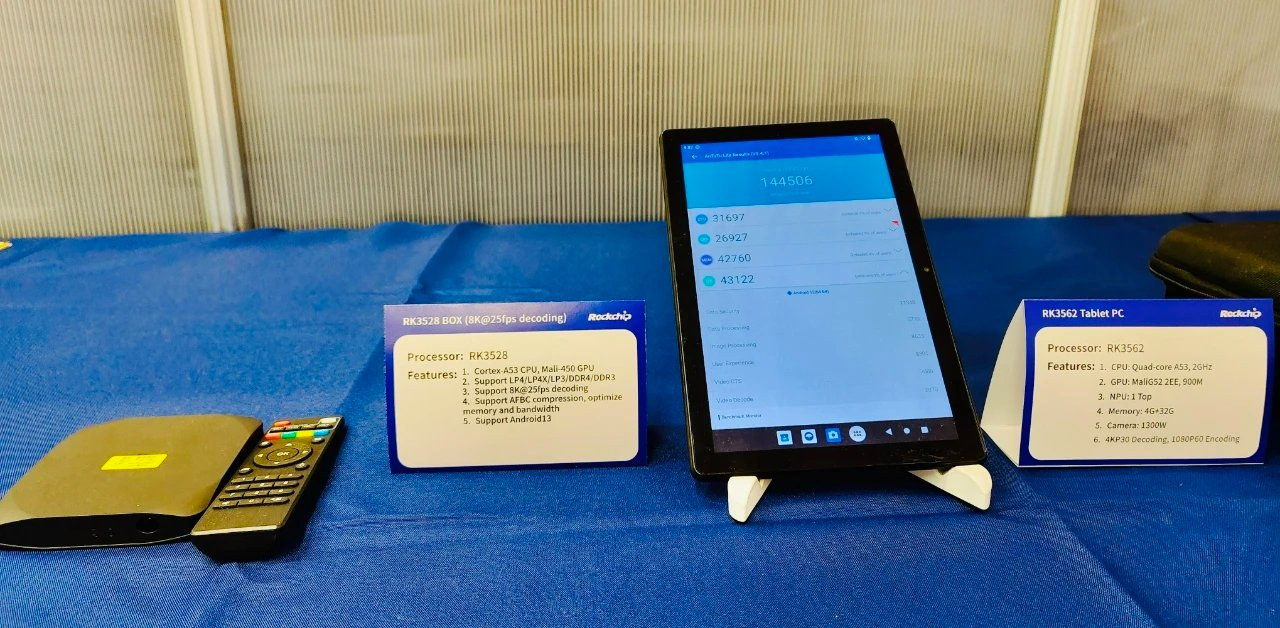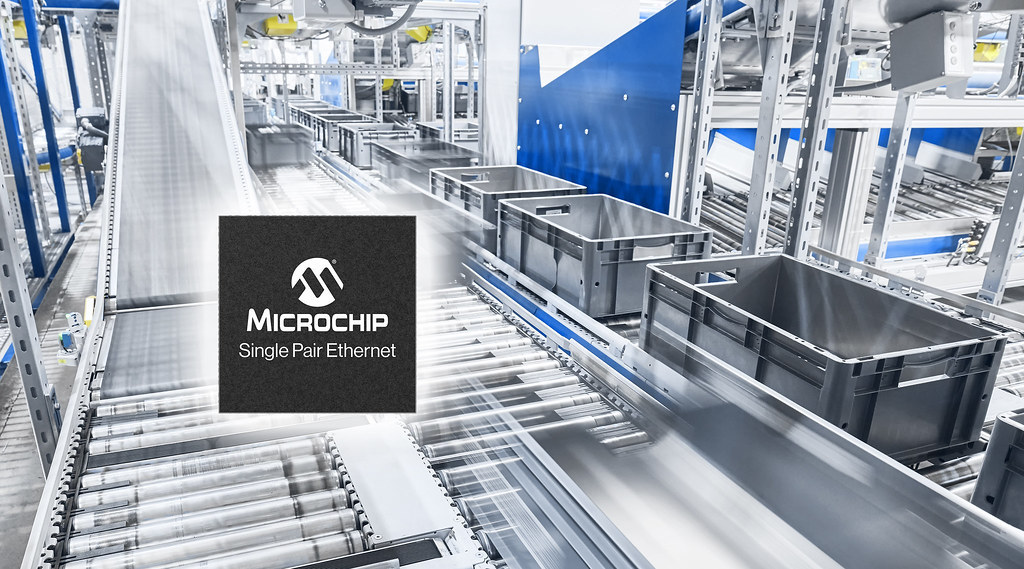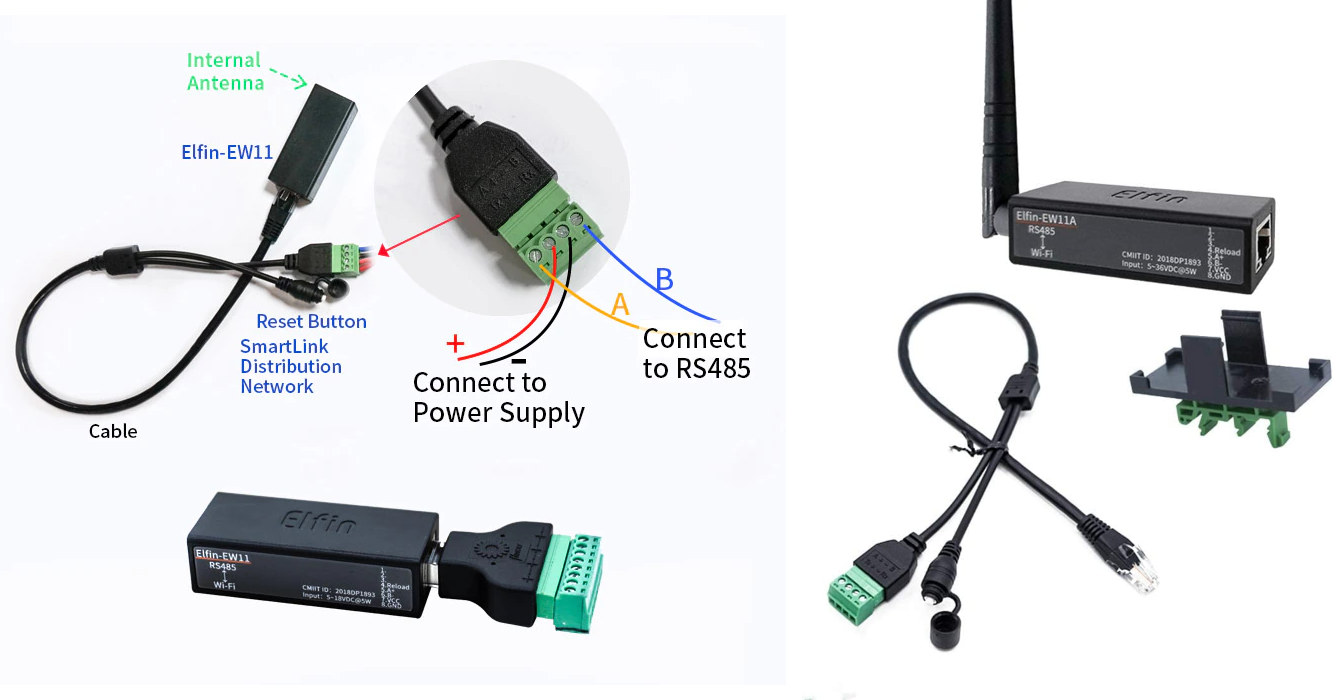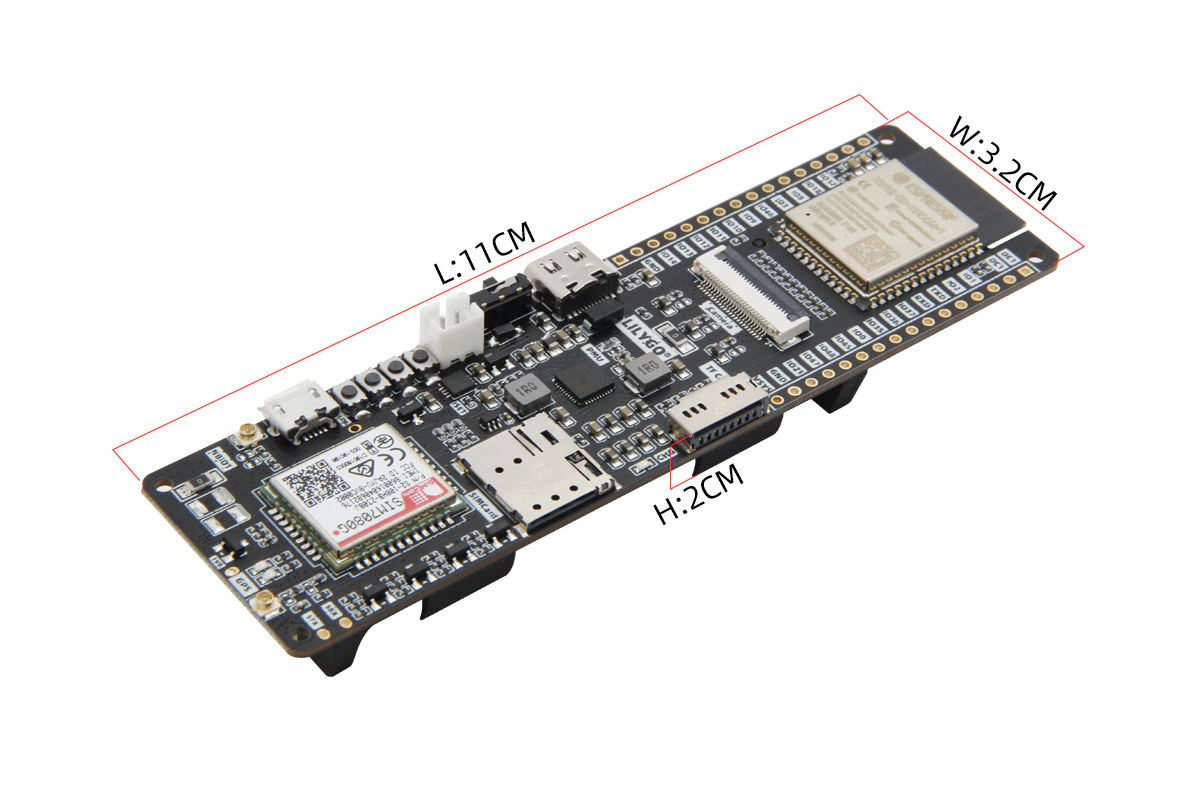GL.iNet are better known for their routers, but the company is also offering IoT gateways and Smart Home hubs such as the GL-S10 BLE to MQTT IoT gateway. The company is now preparing to launch the GL.iNet GL-S200 Thread Border Router in early April, and I’ve been asked to do some beta testing before launch, so GL.iNet have sent me a kit with the GL-S200 and three Thread development boards acting as IoT nodes. A Thread Border Router acts as a WiFi or/and Ethernet gateway connecting to battery-powered Thread sensor nodes equipped with a low-power 802.15.4 radio. In this first post, I’ll go through the hardware and specifications, before reporting my finding in a separate post next week. GL-200 Thread Border Router kit unboxing and specifications The development boards are all identical and they were each kept in an antistatic bag. But let’s open the GL-S200 package first. The Thread […]
WisDuo RAK11720 LoRaWAN & Bluetooth LE module features Ambiq Apollo3 Blue low-power MCU
RAKwireless WisDuo RAK11720 is a LoRaWAN and Bluetooth LE (module) equipped with Ambiq Apollo3 ultra-low-power BLE 5.0 microcontroller and a Semtech SX1262 LoRa transceiver. The Wisduo RAK11720 is pin-to-pin compatible with the STM32WL-based Wisduo RAK3172 LoRaWAN module, and provides an easy upgrade path for IoT applications that require Bluetooth LE connectivity and more memory. WisDuo RAK11720 specifications: MCU – Ambiq Apollo3 Blue AMA3B1KK-KBR-B0 Arm Cortex-M4F microcontroller locked at up to 96 MHz with 1MB flash, 348 SRAM, Bluetooth LE 5.0, and an active power consumption of less than < 6 μA/ MHz LoRa Semtech SX1262 sub-GHz radio transceivers LoRaWAN 1.0.3 specification compliant Supported bands: EU433, CN470, IN865, EU868, AU915, US915, KR920, RU864, and AS923-1/2/3/4 LoRaWAN activation via OTAA/ABP LoRa Point-to-Point (P2P) communication Long-range – greater than 15 km with optimized antenna Antennas – 2x IPEX antenna connectors or RF pads for LoRa and Bluetooth I/O expansion – UART, I2C, SPI, […]
ASUS unveils Tinker V RISC-V single board computer, Tinker board 3 SBC with Rockchip RK3568 SoC
ASUS IoT has added two new members to the Tinker board family with the Tinker V and Tinker Board 3 single board computers powered by respectively Renesas RZ/Five single-core RISC-V SoC and Rockchip RK3568 quad-core Arm Cortex-A55 processor. ASUS Tinker V RISC-V SBC Tinker V specifications: SoC – Renesas RZ/Five single core AndesCore AX45MP RISC-V processor clocked at 1.0 GHz System Memory – 1GB DDR4 Storage – MicroSD card slot, optional 16GB eMMC flash, optional SPI flash Networking – 2x Gigabit Ethernet RJ45 ports USB – 1x Micro USB port, 1x Micro USB (OTG) port Serial – 2x CAN Bus via 6-pin terminal block 2x COM RS232 via 5-pin terminal block Expansion – 20-pin GPIO header with up to 2x UART, 2x I2C, 4x GPIO, 2x ADC, 1x SPI, 3.3V, and GND Debugging – JTAG pin header Power Supply – 10 to 24V DC via 5.5/2.5 mm DC barrel jack […]
DFI PCSF51 – An 1.8-inch industrial SBC with AMD Ryzen R2000 processor
DFI PCSF51 is a 1.8-inch single board computer (SBC) powered by an AMD Ryzen Embedded R2000 processor with up to 8GB DDR4 memory and 128GB eMMC flash designed for space-constraints industrial applications, robotics, edge computing, AI vision systems, and more. The business card-sized board comes with HDMI 1.4 video output, Gigabit Ethernet networking, two USB 3.2 Gen 1 ports, and an M.2 Key-E socket for wireless expansion, as well as eight digital I/Os. Other features include a watchdog and an RTC, and the SBC takes 12V DC input on a 2-pin terminal block. DFI PCSF51 specifications: AMD Ryzen Embedded R2000 SoC (one or the other) AMD Ryzen Embedded R2514 quad-core processor @ 2.1/3.7 GHz (Turbo) with 2MB Cache, 8 CU AMD Vega GPU; 12W TDP AMD Ryzen Embedded R2314, quad-core processor @ 2.1/3.5 GHz (Turbo) with 2MB Cache, 6 CU AMD Vega GPU; 12W TDP AMD Ryzen Embedded R2312 […]
Rockchip showcases RK3528 TV box SoC and RK3562 tablet SoC
Rockchip showcased some new processors at Mobile World Congress 2023: the RK3528 for TV boxes, and the RK3562 for tablets both with a Cortex-A53 CPU subsystem, but the former comes with a Mali-450 GPU, and the latter with a faster Mali-G52 2EE GPU. Both are clearly for entry-level devices, but I’m a little surprised they didn’t go with Cortex-A55 cores instead. Rockchip demonstrated the new processors in a TV box running Android 13 and a tablet with a 144,506 score in the latest Antutu benchmark as shown below. Rockchip RK3528 preliminary specifications: CPU – Arm Cortex-A53 processor (core count unspecified) GPU – Arm Mali-450 GPU with AFBC compression support Memory – LP4, LP4X, LP3, DDR4, DDR3 Video decoding – Up to 8Kp25 Supported OS – Android 13 Rockchip RK3562 preliminary specifications: CPU – Quad-core Cortex-A53 processor @ 2 GHz GPU – Mali-G52 EE AI accelerator – 1 TOPS NPU VPU […]
Microchip unveils Single Pair Ethernet (SPE) 10BASE-T1S and 100BASE-T1 Ethernet devices
Microchip has introduced a range of industrial-grade Single Pair Ethernet (SPE) devices for IIoT and industrial Operational Technology (OT) networks for low-speed Ethernet edge devices and a simplified cabling infrastructure for latency-sensitive applications. Microchip LAN8650/LAN8651 10BASE-T1S single pair Ethernet Controllers The LAN8650 and LAN8651 10BASE-T1S MAC-PHY Ethernet controllers come with an SPI for integration into basic microcontrollers rather than higher-end MCUs with a MAC. They can be used to connect sensors, actuators, and other devices over a simple twisted-pair cable. Microchip LAN8650/LAN8651 specifications: High-performance 10BASE‑T1S single-pair Ethernet PHY Compliant with IEEE Std. 802.3cg-2019 (10BASE-T1S) 10 Mbps over a single balanced pair of conductors Half-duplex point-to-point link segments up to at least 15m Half-duplex multidrop mixing segments up to at least 25m with up to at least 8 PHYs Integrated Media Access Controller (MAC) Host interface – SPI Supports time-sensitive networking (TSN) by timestamping frame ingress and egress EtherGREEN Energy Efficiency […]
Elfin-EW11 is a compact WiFi to RS485 unit with Modbus TCP support
Elfin EW11/EW11A is a small WiFi to RS485 unit with Modbus TCP/IP support that works either in the 5 to 18V DC (EW11) or the 5 to 36V DC (EW11A) input range. The WiFi to RS485 adapter is offered with either an internal or external WiFi antenna, the RS485 interface is exposed through an RJ45 port, and an RJ45 to terminal block cable is usually included, as well as a DIN Rail mount. Elfin EW11/EW11A specifications: MCU (I’m not sure which one is used, and the specs depend on where you look..) Unnamed Arm Cortex-M3 microcontroller @ 96 MHz with 2MB flash, 128KB SRAM (on the product page) OR Unnamed microcontroller @ up to 160MHz with 2MB flash, 352KB SRAM (on Aliexpress) Networking Wireless – 2.4 GHz WiFi 4 with up to WPA2PSK security, station, AP, or station+AP modes; internal or external WiFi antenna depending on the model. Wired – […]
IoT board supports WiFi, Bluetooth, NB-IoT, Cat-M and GNSS with ESP32-S3 and SIM7080G modules
LILYGO T-SIM7080G-S3 is an ESP32-S3 WiFi and Bluetooth IoT board with a SIMcom SIM7080G LTE Cat-M (eMTC), NB-IoT, and GNSS module for low-power long-range connectivity and asset tracking. The board also comes with a 18650 battery holder, a solar panel input, a microSD card slot, a camera port, and several I/Os and provides an alternative to the TTGO T-Beam ESP32 board that relies on LoRaWAN for long-range connectivity instead. LILYGO T-SIM7080G-S3 specifications: Wireless modules Espressif ESP32-S3-WROOM-1-N16R8 module with ESP32-S3 dual-core LX7 microprocessor @ up to 240 MHz with Vector extension for machine learning, 16MB flash, 8MB PSRAM, WiFi 4 and Bluetooth 5 LE/Mesh SIMCom SIM7080G global multi-band Cat-M and NB-IoT module with GNSS Bands: Cat-M – B1/B2/B3/B4/B5/B8/B12/B13/B14/B18/B19/B20/B25/B26 /B27/B28/B66/B85 NB-IoT – B1/B2/B3/B4/B5/B8/B12/B13/B18/B19/B20/B25/B26/B28 /B66/B71/B85 Data rate Cat-M – Uplink: 1,119 Kbps, downlink: 589 Kbps NB-IoT: Uplink: 150 Kbps downlink: 136 Kbps LTE RF Power Class: 5 (Typ. 21dbm) GNSS – GPS, GLONASS, […]


